| METERS |
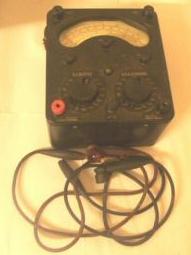 |
| This was the original Avometer Mk 8 VOM. Later, AVO produced the Mk 3, 4 and 5 models. (Via E-bay) |
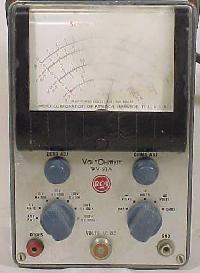 |
| RCA Voltohmyst WV97A (Photo via E-Bay) |
EMR TEST EQUIPMENT
BRCN213, the RCN's Catalogue of Materiel circa October 1961, lists test instruments that were available for ship's Electronics Maintenance Rooms or shore based repair depots in the era noted. These instruments are listed under NATO class 6625 and RCN Class 478. Displayed, are selected extracts for the most commonly used instruments:
Cover
Audio Frequency Generators
Frequency Meters
Meters - Electronic
Meters - Multimeter
Oscilloscopes
Radio Frequency Generators
Tube TestersIn a training document provided by David Semple, there is reference to two instruments for which there is no information . They are:
Frequency Meter Type 127, Model 1 . Likely used to test RATT tones.
Test Set , RF TF890/4
If anyone can provide information on either of these, please constact Jerry.Proc@sympatico.ca
**********
Some of the following instruments below have been confirmed as being used in HAIDA's EMR or by the RCN in the EMR's of other ships. As usual, if anyone can help to fill in the blanks, do not hesitate to contact the web master.Jim Brewer, who served in the Chaudiere, recalls tube tester useage aboard his ship. " We used a Stark tube tester that was portable and also had a larger version which remained in the EMR. There were three tube testers in the ship. One was used by the radio/radar technicians, one by Sonar and the weapons technicians held the third one. A lot of the tech's had their own Simpson meters which were bought as kits and assembled by them. I still have mine".
| METERS |
 |
| This was the original Avometer Mk 8 VOM. Later, AVO produced the Mk 3, 4 and 5 models. (Via E-bay) |
 |
| RCA Voltohmyst WV97A (Photo via E-Bay) |
FREQUENCY METERS 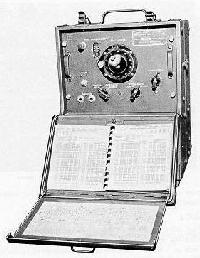
BC221-M. Range - 125 kHz to 20 MHz. (An RCN photo) 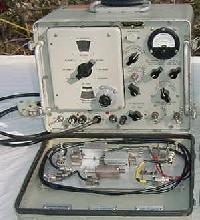
URM-25D RF Signal Generator. (Photo courtesy K5BCQ)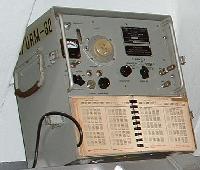
AN-URM32 Frequency Meter. Range 125 kHz to 1000 MHz. (Photo by Jerry Proc)The calibration book for the BC-221, with over three thousand calibration points, is of course key to the operation of this frequency meter The early versions were calibrated manually, a process that took a total of 16 man-hours per unit. When WWII came, there was of course, a demand for thousands of them and Philco developed an automated system to generate the calibration books and maintaining the required accuracy of 0.01 percent. Philco's system which employed 126 /tubes got the time down to 6.5 hours per unit. Since no two calibration books were the sane, a BC-221 which lacks the book is just about useless.
Contributors:1) Paul Kuznecov <koozis(at)rogers.com>
2) Jim Brewer <snack.235(at)sympatico.ca>
3) BRCN213
Jan 31/22